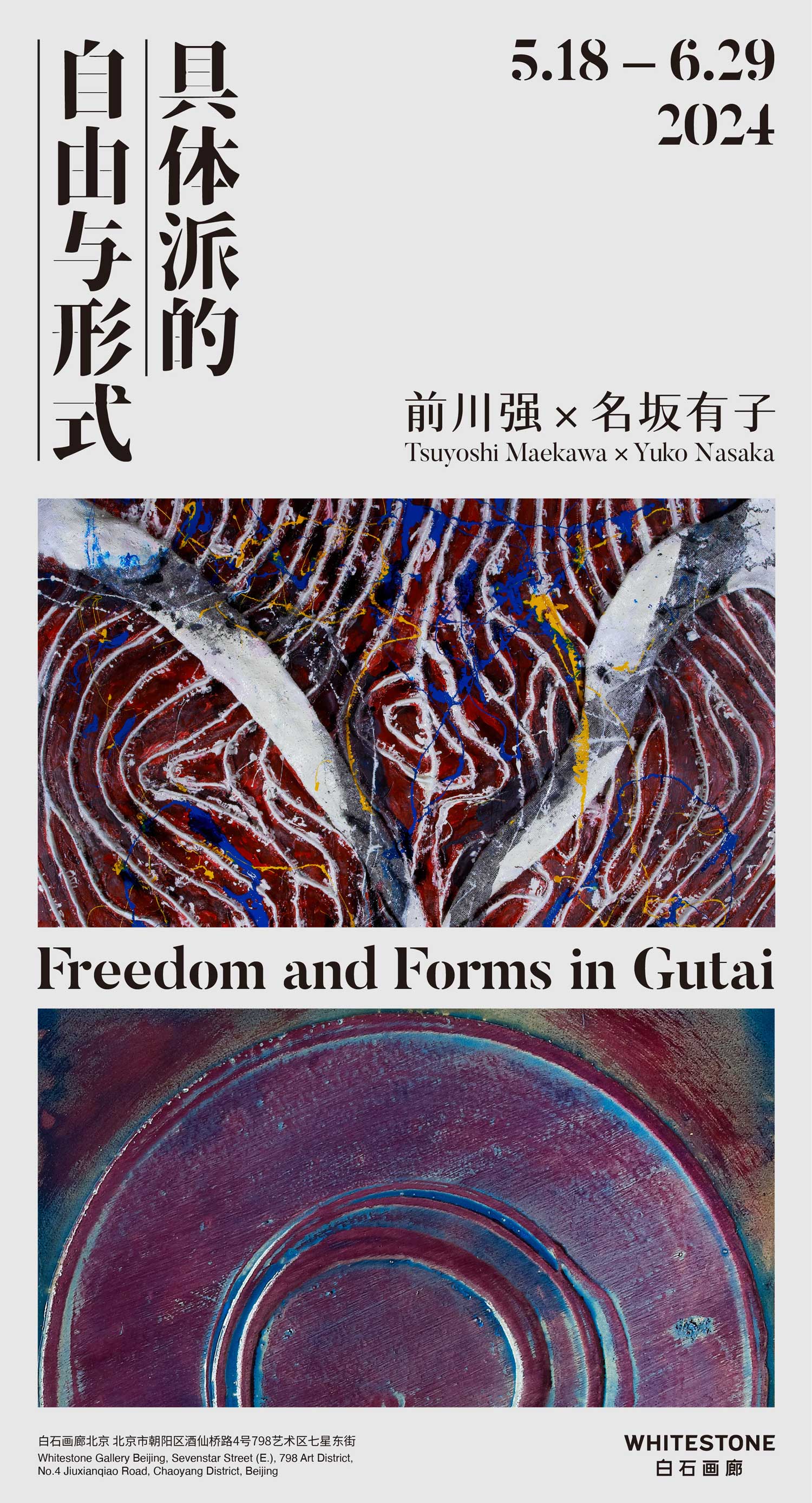展期 Period:
2024.5.18—2024.6.29
艺术家 Artist:
前川强 Tsuyoshi Maekawa、名坂有子 Yuko Nasaka
地点 Venue:
新闻稿 Press Release:
白石画廊北京荣幸呈现“具体派的自由与形式:前川强与名坂有子”双人展,此次展览将梳理两位艺术家自1960年起至近期的创作,旨在呈现他们对物质的探索与实验,以及在艺术生涯中持续展现的创作激情和创新力。
两位艺术家都是具体派成员,该团体于1954年由吉原治良在大阪创立,是日本艺术史上最有影响力的前卫艺术团体之一,以“做前人从未做过的事情”为信条, 每位艺术家的作品都具有极强的个人风格和辨识度。从1960年早期开始,随着具体美术馆(Gutai Pinacoteca)的开幕以及新成员的加入,具体派的创作由注重身体与行动的‘第一代’逐渐转向运用不寻常的物料和工具的‘第二代’,探讨平面与空间的关系。前川强和名坂有子正是具体派第二代的代表艺术家 : 前川强以各种布料通过缝纫、剪贴、绘画的方式展现物质的张力;名坂有子以圆的形式不断拓宽艺术的边界。
前川强(b.1936)以布料贯穿其创作,使用了缝纫机、双手缝合、拉伸等等的方式造型,并运用多彩的色调,使其作品有明显的抽象表现主义的倾向。凹凸似浮雕的造型赋予了作品前卫的概念和强烈的情感,从1960年代初期的原始的精神力量、到2000年后时而饱含激情、时而细腻如潮汐流水般的流淌,让观众重新审视布料物质本身,开创了一场自由与艺术的对话。
名坂有子(b.1938)因家族经营计量器的制造工厂,“圆”是她从年幼起就非常熟悉的形态。与东方悠久的陶艺传统息息相关,制陶的转盘启发了名坂创作了同心圆和带有螺旋纹的圆盘,其使用刮刀的技巧、以及利用喷枪覆盖上色的方式也与陶艺制作相关。此系列作品在融合了传统的基础上,探索了圆盘意象的美感,借由重复的方式营造出来的视觉体验和1960年代流行于欧美流行的“动态艺术”(Kinetic Art)和“欧普艺术”(Op Art)有异曲同工之妙,同时也无限延伸和拓宽了艺术的可能性。
常设展厅中还将展出具体派最具代表性的艺术家的精选作品,展出艺术家包括吉原治良、白发一雄、田中敦子、嶋本昭三、鹫见康夫、元永定正、上前智祐、松谷武判、向井修二,以呈现具体派更多的风格和多姿多彩的面貌。
Whitestone Gallery Beijing is honoured to present "Freedom and Form of the Gutai: Tsuyoshi Maekawa and Yuko Nasaka” duo exhibition. This exhibition traces the artistic endeavours of both artists from the 1960s to their most recent works, the aim is to present their exploration and experimentation with the material, creative passion and inventiveness that be shown during their artistic career.
Both Tsuyoshi Maekawa and Yuko Nasaka were members of the Gutai Art Association, an avant-garde group founded in 1954 by Jiro Yoshihara in Osaka, and one of the most influential groups in the history of Japanese art. The group's slogan, "Do what no one has done before," is exemplified by each artworks’ distinct style and identity. Starting in the early 1960s, with the opening of the Gutai Pinacoteca and the addition of new members, Gutai's focus shifted from the physical and performative nature of the first generation to the use of unconventional materials and tools by its second generation, exploring the connection between picture plane and space. Tsuyoshi Maekawa and Yuko Nasaka were in the second generation - Maekawa employs various fabrics in his work, using techniques like sewing, cutting, and painting to express the tension of materials; Nasaka expands the boundaries of art with her continual exploration of circular forms.
Tsuyoshi Maekawa (b. 1936) has been using fabrics throughout his artistic career, using sewing machines, hand-stitching, and stretching to mould shapes, and they are enhanced by a vibrant palette, reflecting a strong Abstract Expressionism influence. His textured, relief-like surfaces lend a cutting-edge conceptual and emotional depth to his works, ranging from the primal spiritual force of the early 1960s to the passionate yet delicately flowing expressions in post-2000, prompting a re-evaluation of fabric as a material as well as initiating a dialogue between freedom and art.
Yuko Nasaka (b. 1938), influenced by her family's business in manufacturing measuring instruments, has been familiar with the form of the circle since childhood. Her work is deeply connected to the longstanding tradition of pottery in East Asia, inspired by the potter's wheel, she creates concentric circles and spiral patterns on circular plates. Her techniques, which include scraping and applying colours in a flowing texture and gloss, are related to the pottery craftmanship. Her works not only blend in various traditional aesthetics but also explore the beauty of circular motifs, creating a visual experience through repetition that resonates with "Kinetic Art" and "Op Art" that prevailed in Europe and America during the 1960s, thus endlessly extending and expanding the possibilities of art.
The exhibition also features selected works by iconic artists of Gutai, including Jiro Yoshihara, Kazuo Shiraga, Atsuko Tanaka, Shozo Shimamoto, Yasuo Sumi, Sadamasa Motonaga, Chiyu Uemae, Takesada Matsutani, Shuji Mukai, further showcasing the diverse and vibrant styles of the group.

